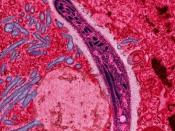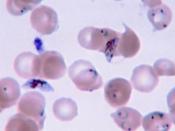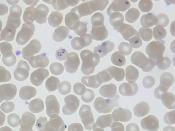INTRODUCTION:
The Australian biology dictionary defines a disease as " any change that impairs the function of an individual in some way; that is, it harms the individual due to infection, injury or incorrect body metabolism." These diseases effect and impair the quality of life. This SAC will include detailed research into the causes, similarities, methods of transportation between hosts, and relations between host and pathogen of the chosen disease. This report on pathogenic organisms will target the disease Malaria, Pathogen/Parasite type Protozoan.
Malaria is cause by the protozoan parasites Plasmodium. There are 4 species of Plasmodium that produce malaria.
-Plasmodium falciparum
-Plasmodium vivax
-Plasmodium ovale
-Plasmodium malaria
Differences between the 4 strains is shown below
**Plasmodium falciparum is the most fatal, and untreated it can lead to cerebral malaria, a fatal disease affecting the brain.
The symptoms of malaria include
-Cold stage: Fever, Shaking, Chills.
-Hot stage: High fever, Headache, Nausea, Vomiting, Dizziness, Pain, Delirium.
-Sweating stage: Sweating, Fall in temperature, Prostration.
-Anemia: Pallor, Tiredness, Fatigue, Shortness of breath.
-Splenomegaly (Swollen Spleen)
-Hepatomegaly (Enlarged Liver)
The condition Malaria is a disease caused by the presence of the sporozoan Plasmodium in human or other vertebrate red blood cell. There are usually transmitted to humans by the bite of an infected female mosquito of the genus Anopheles (only females) that previously sucked the blood from a person with the malaria infection. Human infection then begins with the exoerythrocytic cycle in liver parenchyma cells (thin walled cells that make up the "packing tissue" for human organs), followed by a series of erythrocytic(red blood cell) schizogenous (asexual reproductive) cycles repeated at regular intervals; production of gametocytes in other red cells provides future gametes for another mosquito infection; characterized by episodic severe chills and high fever, prostration and occasionally fatal termination.
The complexity of...


